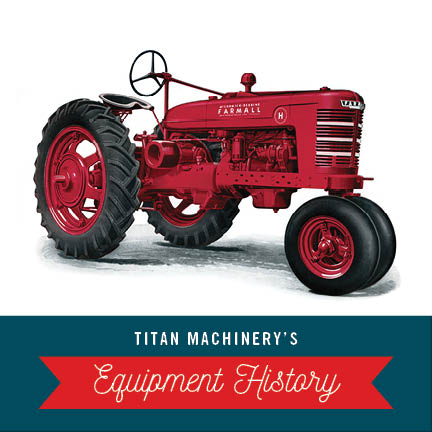
By: Grace Lange
Titan Machinery was founded on the principle of serving customers by leveraging the purchasing power, equipment/parts inventories, parts and service expertise, and industry know-how of a multi-store network of dealers. We pride ourselves on providing the best quality equipment with industry-leading service and support. Titan Machinery sells and supports equipment built by a variety of leading manufacturers, but the core or our equipment business has always been the Case IH, Case CE, and New Holland brands. Our story started in 1980 when two North Dakota farm equipment stores decided to combine their strengths into something bigger, but what about the history of the equipment brands that make up the majority of what we sell and service and that you use each day?
History of Case IH
Case IH began in 1842 when Jerome Increase Case founded the Racine Threshing Machine Works in Racine, Wisconsin. He was the innovator of a thresher 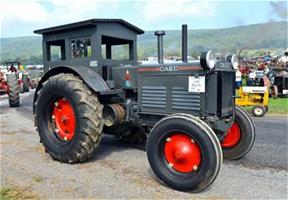 that separated straw from grain. Later that decade, Cyrus McCormick founded the McCormick Harvesting Machine Company that soon became International Harvester in 1901, after merging with three other equipment companies. One of International Harvester's most recognized and successful products was the Farmall Tractor. In 1984, Tenneco, a large industrial holding company, bought the Kern County Land Company (stakeholders in JI Case business) and International Harvester's agriculture equipment division. JI Case
that separated straw from grain. Later that decade, Cyrus McCormick founded the McCormick Harvesting Machine Company that soon became International Harvester in 1901, after merging with three other equipment companies. One of International Harvester's most recognized and successful products was the Farmall Tractor. In 1984, Tenneco, a large industrial holding company, bought the Kern County Land Company (stakeholders in JI Case business) and International Harvester's agriculture equipment division. JI Case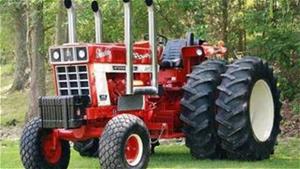 remained the title of Tenneco's machinery business, but logos and branding changed to incorporate both brands. Later, JI Case bought Steiger Tractor Inc, of Fargo, ND, but soon a change in the economy gave them the opportunity to make a public offering of shares in the newly-named Case Corporation, which switched its machines branding from 'Case International' to the familiar 'Case IH' that we are accustomed to seeing
remained the title of Tenneco's machinery business, but logos and branding changed to incorporate both brands. Later, JI Case bought Steiger Tractor Inc, of Fargo, ND, but soon a change in the economy gave them the opportunity to make a public offering of shares in the newly-named Case Corporation, which switched its machines branding from 'Case International' to the familiar 'Case IH' that we are accustomed to seeing 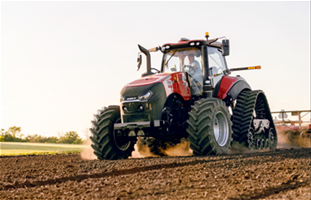 today. The brand then experienced rapid growth as they developed new machinery to meet the growing demand of modern farm equipment around the world. In 1999, Case IH became part of CNH Global, allowing Case IH expanded access to the worldwide farm equipment markets, and today their Case IH red equipment is found on farms worldwide.
today. The brand then experienced rapid growth as they developed new machinery to meet the growing demand of modern farm equipment around the world. In 1999, Case IH became part of CNH Global, allowing Case IH expanded access to the worldwide farm equipment markets, and today their Case IH red equipment is found on farms worldwide.
To see a yearly timeline of Case IH, click here.
History of CASE Construction
The History of CASE Construction is historically connected to that of Case IH. The brands have always been independent businesses, and the history of CASE 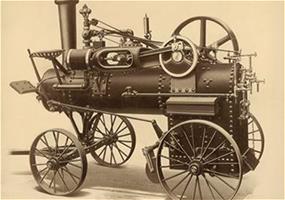 Construction includes some of the most popular pieces of equipment in the construction world. Jerome Increase Case also invented the portable steam engine in 1869, which was essential to the advancement of road construction. By 1912, the single portable steam engine shifted to an entire line of road-building equipment that paved
Construction includes some of the most popular pieces of equipment in the construction world. Jerome Increase Case also invented the portable steam engine in 1869, which was essential to the advancement of road construction. By 1912, the single portable steam engine shifted to an entire line of road-building equipment that paved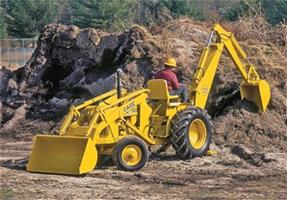 the way for CASE Construction to purchase the American Tractor Corporation in 1957. They soon created the first factory-integrated tractor loader backhoe which caught the eye of The Kern County Land Company, leading them to purchase a large stock in Case, who was then bought out by Tenneco.
the way for CASE Construction to purchase the American Tractor Corporation in 1957. They soon created the first factory-integrated tractor loader backhoe which caught the eye of The Kern County Land Company, leading them to purchase a large stock in Case, who was then bought out by Tenneco.
In 1969, Case took its first step into the skid-steer loader business. The purchase of Poclain, a top hydraulic excavating technology company out of France, expanded their business into the excavator segment. Later, Tenneco decided to leave the agricultural and construction equipment business, and CASE Construction became part of the Fiat Group and merged with New Holland NV. This duo created CNH Global, but kept the distinct CASE and New Holland brands. In a short time, CASE had already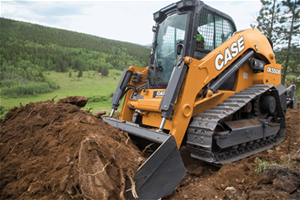 manufactured over 500,000 tractor loader backhoes and was known as the industry leader in that market. In 2014, CASE signed an agreement with Sumitomo to produce hydraulic excavators and in 2016, CNH Industrial signed an exclusive alliance with Hyundai Heavy Industries for the production and design of mini-excavators under the CASE brand. Today, CASE offer a full line of backhoe loaders, skid-steer loaders, excavators, wheel loaders, dozers, graders and more that are used to help build the infrastructure that powers the world we live in.
manufactured over 500,000 tractor loader backhoes and was known as the industry leader in that market. In 2014, CASE signed an agreement with Sumitomo to produce hydraulic excavators and in 2016, CNH Industrial signed an exclusive alliance with Hyundai Heavy Industries for the production and design of mini-excavators under the CASE brand. Today, CASE offer a full line of backhoe loaders, skid-steer loaders, excavators, wheel loaders, dozers, graders and more that are used to help build the infrastructure that powers the world we live in.
To learn more click here.
History of New Holland
Differing from the histories of Case IH and CE, New Holland's roots started when Abram Zimmerman founded a blacksmith shop in New Holland, Pennsylvania. Abram wanted to grow his business, so he started to design power farm machines. He soon developed a 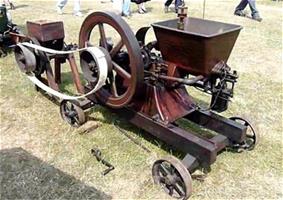 freeze-proof engine of his own design after his customers found that his machines froze during bitter winters. Abram's New Holland Machine Company was acquired by Sperry Rand Corporation in 1947. They also acquired Leon Claeys' threshing machine manufacturing business that was the first business to develop a self-propelled combine harvester in Europe in 1964. The Sperry Rand Corporation re-branded their products with the Clayson name.
freeze-proof engine of his own design after his customers found that his machines froze during bitter winters. Abram's New Holland Machine Company was acquired by Sperry Rand Corporation in 1947. They also acquired Leon Claeys' threshing machine manufacturing business that was the first business to develop a self-propelled combine harvester in Europe in 1964. The Sperry Rand Corporation re-branded their products with the Clayson name.
While these brands were developing, Henry Ford and Fiat moved their manufactured tractors and other vehicles into the market. By 1986, Sperry Corporation decided to exit the farm equipment business. This led to Ford purchasing New Holland and producing a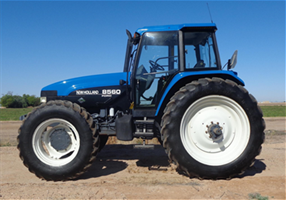 full line of harvesting machinery. Ford withheld the Ford name and blue color for its tractors, and the yellow and New Holland name for their harvesting equipment.
full line of harvesting machinery. Ford withheld the Ford name and blue color for its tractors, and the yellow and New Holland name for their harvesting equipment.
In 1990, Ford, the parent company of New Holland, decided to sell its farm and construction shares to the Fiat Geotech Corporation to create a new company called N.H. Geotech that soon became the more recognizable brand, New Holland. By 2017, New Holland expanded their equipment line after being acquired by CNH Industrial, making them one of the leading brands in farm equipment around the world. They are also a leader in clean energy, and are continually working towards developing prototype hydrogen and methane power for tractors.

To learn more click here.